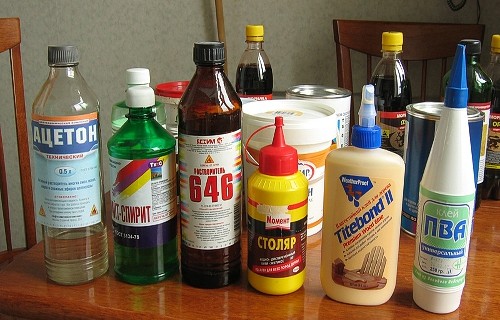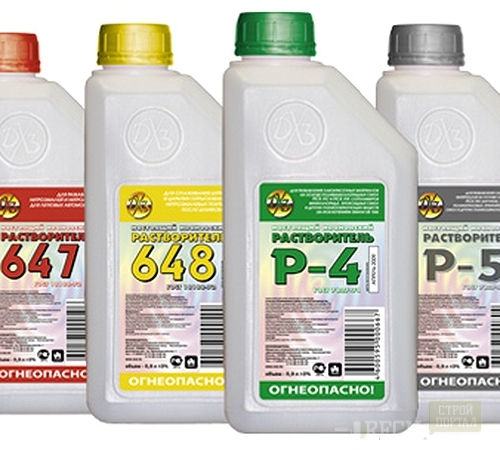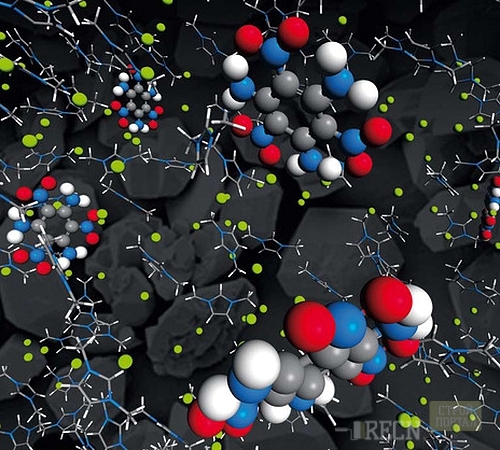
Solvent: Scope and Properties paints and varnishes

A group of substances named solvents is used to breed various liquid, dry or gaseous substances. In everyday life, the largest distribution was obtained by a liquid solvent, which is used to work with paintwork products. Despite the seeming simplicity of the process, the chemical properties of various solvents are quite different among themselves, so before starting work, it is necessary to know exactly what kind of version of this substance is most optimally suitable for your purposes.
Types of solvents
The most simple division solvent occurs in composition:
- one-component,
- multicomponent.
Single-component solvents appeared first and were used long before this name went into use. Among them:
- acetone,
- solar
- petrol,
- alcohol,
- white Spirit.
These solvents are currently applied extremely rare, as they are significantly inferior in terms of the quality of multicomponent. Such solvents are obtained by industrial means and are mixtures of various chemicals that actively interact with the soluble material and allow you to achieve a maximum effect with minimal costs.
The nomenclature is made to allocate the following names of multicomponent solvents:
- rooms (645 - 651), these are the most gentle solvents that work without protective agents are allowed to work with most paints and varnishes,
- cR-36 solvent - a narrow-profile substance consisting of butanol and butyl acetate used to work with leather varnishes,
- industrial solvents are marked with the letter "P" are found from № 4, up to No. 3160 are extremely dangerous for health, so work with them is possible only in a protective suit, which involves the presence of closed building glasses and the respirator, the solvent 4 is most often applied to everyday life. As it is designed to work with polyvinyl chloride resins based materials (vinyl paints),
- rCC solvent, applied to rubber-based paints, is toxic, so work is performed in a protective suit,
- rML solvents (RML-315) are used to work with nitrocellulose varnishes,
- the solvent of PC (1-2) is suitable for working with oil paints, solvent 2 is often used, since its chemical composition allows the substance to use substance and for other paints and varnishes,
- rFG solvent, for breeding primer paints,
- solvent RE (1-4), exclusively for work with enamels,
- the solvent FC (1-2) is used for the dilution of flexo-color.
Quite often in the literature there are such concepts as:
- organic solvents
- inorganic solvents.
The difference between them is cardinal, as they differ in polarity types and in different ways affect the covalent bond at the internal level of the molecule kernel. But, these knowledge is relevant only for the primary process of manufacturing paint products from petroleum products. If we are talking about polyvinyl chloride paints, then this question is not relevant at all. It is worth noting that most solvents combine, both organic and inorganic substances.
Choose solvent for home
The properties of any solvent are directly related to the fact that it consists of. The chemical industry offers the following components:
- toluene, primary solvent polymers,
- butyl acetate, the main solvent of nitrocellulose,
- ethyl acetate, additional solvent for nitrocellulose,
- butanol, the main solvent resin,
- ethanol, universal solvent,
- ethyl cellosolv, universal solvent, very toxic,
- acetone, the main solvent of varnishes,
- xylene, an additional universal solvent,
- white spirit, oil paint solvent, an additional universal solvent.
Knowing the basic properties of materials to buy a solvent that optimally corresponds to your needs will not be difficult.
It is important to understand that all these substances are very volatile and have a huge negative impact on the body. When working with them, it is advisable to perform at least elementary safety rules:
- do not breathe deeply
- do not leave open skin parts
- in the case of entering the skin to quickly wash off with plenty of water,
- use the respirator or wet scarf,
- when working in a closed room, be sure to use protective glasses and ventilated every thirty minutes.
At home, most often needed a universal solvent for paint, with a long shelf life, not capricious to temperature drops. In accordance with these requirements, a special product was developed.
Universal solvent
The most optimal option is the solvent 646, it allows you to work with completely any paint products without loss of quality. The only exception is oil paints.
The substance is used as follows:
- stir paint in the bank (varnish),
- add a slight solvent and mix,
- mark the change in the consistency of paint,
- add solvent to getting the desired viscosity.
The composition of this solvent, although it is universal, but the percentage ratio of components makes it less volatile, as a result, the risk of poisoning in pairs is becoming less than from other representatives of this series.
In addition to the main function, the solvent also performs several others. It improves the chemical bond of paint materials, due to which they better and smoothly fall on the surface, in addition, form a film that increases the enamel and varnishes to the surface.
This solvent, the price of which is one of the lowest on the market, is perfect for everyone who colors rarely. If you professionally decided to make the manufacture of furniture and carry out overhaul, then you should buy mixes specifically intended for used types of paints.
Important: Any solvent is made on the basis of alcohols and oil refining products, so it is very easily flammable. In the event that the fire still happened, it is necessary to extinguish the fire with sand or earth, as water will only strengthen the burning process.






















